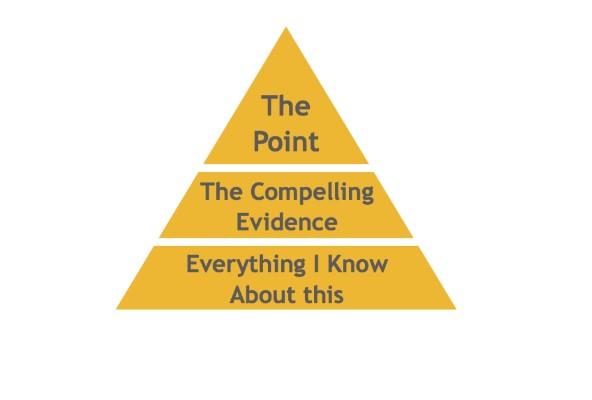
The seven secrets of inspiring speakers
byBeing an inspiring speaker is key to how HR leaders influence in the boardroom and beyond. Now, a new framework dubbed ‘The Seven Secrets of Inspiring Presenters’ aims to solve the mystery of it all. Atholl Duncan shares the seven secrets.
1. Silence is more powerful than noise
To communicate effectively, we need to allow our words, our thoughts, and our sentences to land in the minds of our audience.
How often do we listen to someone who talks at us with a tsunami of “blah, blah, blah” never pausing for breath? It’s exhausting.
Silence is more powerful than noise. It allows the audience to pause and reflect. It allows a good point to sink in and gives the listener time to consider.
Developing the confidence and technique to pause at the right time is the first secret of impactful presentation.
This does not mean you need to speak more slowly. In fact, it may mean you need to maintain a good pace in between the points you make.
To communicate effectively, we need to allow our words, our thoughts, and our sentences to land in the minds of our audience
2. Try and recreate the style that we use in conversation
When we have a great conversation with a friend or a colleague we are engrossed.
There is an energy about the interaction.
We use our hands, our body, our smile and all our mannerisms in the most natural of ways to communicate.
Don’t adopt an entirely different style when you switch to presentation mode.
Sometimes with great speakers in a large crowd you hear people say, “It felt like they were talking to me.” Also remember to speak with the spoken words and not to read the written word.
3. Let the message pyramid guide you
To be inspiring you need to have structure to what you are saying.
How often have you listened to a presentation and wondered, “When is she/he going to get to the point?”.
The message pyramid (below) gives us structure. It also mitigates against the pitfalls that many experts fall into by swamping everyone with too much detail.

The message pyramid guides us to start with the point. Then to cover the compelling evidence which supports your main point – what you need to know.
Then you rephrase the main point with some impactful words to underline to your audience the importance of what you are communicating.
The detail – everything you know about the subject – can be kept for the Q and A or given out in a leave behind of written material.
4. It is essential for you to connect with your audience
Our impression of how sincere we find someone and how much we trust them is influenced most by what we see.
According to a recognised theory, over half (55%) of sincerity comes from body language; 38% from the voice; and 7% from the words we choose to use.
Stand-up comedians focus on winning the opening minute by making quick connections.
Those who fail to do this ‘die on their feet’. When you present – especially to people who don’t know you – there is an unseen barrier that stands between you and them.
We knock this down by connecting with what we have in common and by our shared beliefs and passions.
Also remember, the sweetest word to any person is their own name. Use that in every presentation.
Our impression of how sincere we find someone and how much we trust them is influenced most by what we see
5. Stay in the moment
Most of us get nervous before we speak in public.
The bigger the audience or the more important the occasion, the more nervous we can get.
This is natural. What we all have to do is be aware of what is happening to us physically when we are nervous and use certain techniques to counter our nerves. Deep breaths slow a racing heart.
When we are presenting, we must stay in the moment.
What often happens is that we are distracted by thinking about what we didn’t say a moment ago and what we are about to say in a few minutes' time.
This can sometimes appear as two voices in your head. One is your inner critic. The other is your inner coach. We must train ourselves to silence these inner voices
Try and recreate the interaction of a conversation whether you are sitting in front of a panel of three people or an audience of 300
6. Use your space to help capture attention
Actors are very used to this concept. Whether you are in your virtual space or in the conference hall, use your hands, your body language, and your smile to speak to your audience.
Try and recreate the interaction of a conversation whether you are sitting in front of a panel of three people or an audience of 300.
7. Being memorable – for the right things – is what we are trying to achieve
Think how many hours of presentations we listen to in our lives.
The vast majority of this time is not memorable.
Amid such a volume of words a great presenter breaks through.
Quite often the best way to do this is to use the power of metaphor or observational storytelling.
A golden phrase, a remarkable story, or an insightful observation cut through the rest of the oratory. If we touch people’s emotions or beliefs, we create a memory. Be passionate about what you do and what you say.
Most of all, finish well. As Aristotle observed: “A speech is like a love affair. Any fool can start it but to end it requires considerable skill”.
If you enjoyed this, read: Leadership development: what makes an inspiring manager during a pandemic?





Replies (0)
Please login or register to join the discussion.
There are currently no replies, be the first to post a reply.